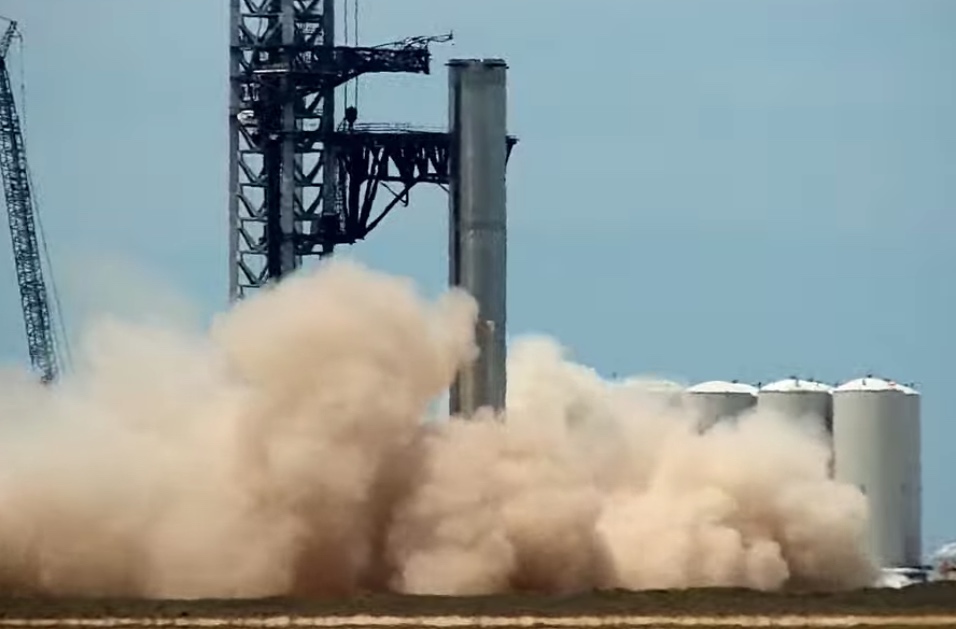SpaceX could send its next-generation Super Heavy rocket on its first test flight as early as next month.
As part of the preparations for the most powerful rocket ever built, the company has this week been performing ground-based test fires of the booster at its facility in Boca Chica, Texas.
The Super Heavy’s first-ever test fire took place on Tuesday, though it only lasted a few seconds. A second one took place on Thursday and went on for around 20 seconds, kicking up a mass of dust in the process. You can watch it in the video below:
Commentators on NASASpaceflight suggested that each test blasted only one of the rocket’s 33 Raptor engines as engineers seek to confirm the rocket’s readiness for its debut flight. We can soon expect to see further tests using more of the rocket’s engines at the same time, giving us a more realistic idea of the booster’s awesome power.
SpaceX CEO Elon Musk said in a tweet that the procedure was designed to test “autogenous pressurization,” described as “the use of self-generated gaseous propellant to pressurize liquid propellant in rockets.”
SpaceX also test-fired its Starship spacecraft on Tuesday. You can watch footage of the event in the video below. The Starship will sit atop the Super Heavy when the rocket blasts into space on its first orbital test flight, which is expected to take place in September or soon after.
Collectively known as the Starship, SpaceX plans to deploy the reusable vehicle for missions to the moon, Mars, and possibly beyond. In an exciting mission planned with NASA, a special version of the Starship will put the first woman and first person of color on the lunar surface, possibly as early as 2025.
Starship’s moon lander will carry the astronauts from the planned Lunar Gateway station to the moon’s surface. The astronauts will reach the Gateway aboard the Orion spacecraft, which will be carried into orbit by NASA’s new Space Launch System (SLS) rocket.
While the timing of Starship’s lunar lander mission therefore depends to a large extent on how NASA fares with the first flights of its new SLS rocket as part of the early Artemis missions, SpaceX also needs to achieve success with the early orbital flight tests of the Super Heavy and Starship spacecraft in order for the highly anticipated crewed moon mission to have any chance of taking place in the middle of this decade.
There is much work still to be done by both SpaceX and NASA, and the various mission dates may well slip, but both are still moving steadily toward the beginning of a new era of deep space exploration.
Editors’ Recommendations
